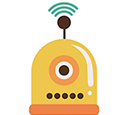Christmas MT's answer to Shanice Lee's Junior College 1 H2 Maths question.
done
{{ upvoteCount }} Upvotes
clear
{{ downvoteCount * -1 }} Downvotes

As I mentioned to another student who posted a Chemistry question, treat A-Level Chemistry like PSLE Mathematics. In particular, questions involving the mole concept are not unlike 4-mark problem sum questions involving ratio for PSLE Mathematics, just with chemical equations thrown in.
For course, since chemical equations are thrown in, we have to know what chemical equations to use. I have shown the 4 chemical equations required.
The rest of it is using the pretty much well-known "working backwards" method for Mathematics problem sums to solve this.
They reflux phosphorus with chlorine to form phosphorus chloride.
They then add NaOH solution in excess. Phosphorus chloride hydrolyses at this point to form the tribasic acid, which then reacts with the NaOH to form some salt and water.
Since NaOH is in excess, we have to find out how much is it in excess. We take a portion of it to react with HCl that we prepared.
Working backwards, we have the working shown.
For course, since chemical equations are thrown in, we have to know what chemical equations to use. I have shown the 4 chemical equations required.
The rest of it is using the pretty much well-known "working backwards" method for Mathematics problem sums to solve this.
They reflux phosphorus with chlorine to form phosphorus chloride.
They then add NaOH solution in excess. Phosphorus chloride hydrolyses at this point to form the tribasic acid, which then reacts with the NaOH to form some salt and water.
Since NaOH is in excess, we have to find out how much is it in excess. We take a portion of it to react with HCl that we prepared.
Working backwards, we have the working shown.
Date Posted:
7 years ago

